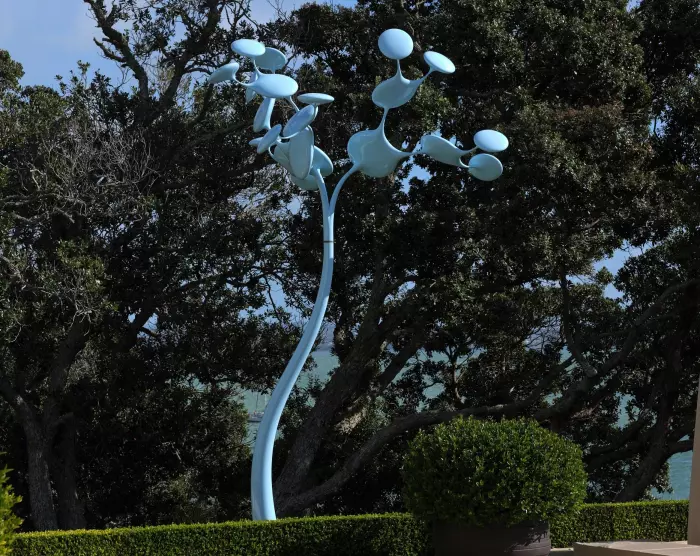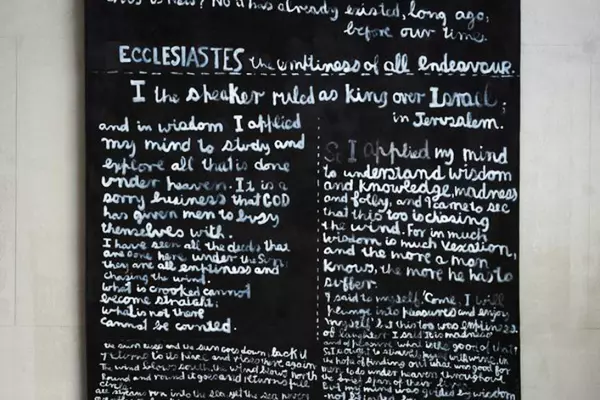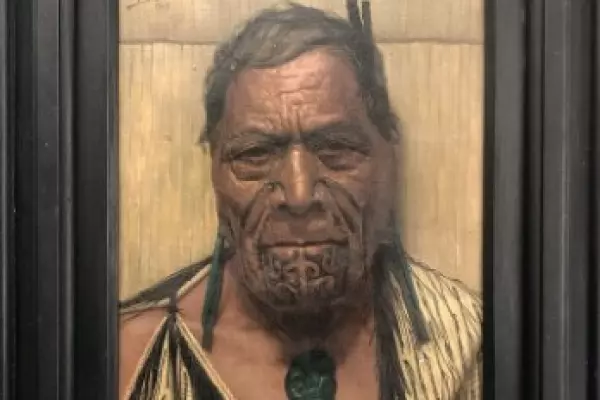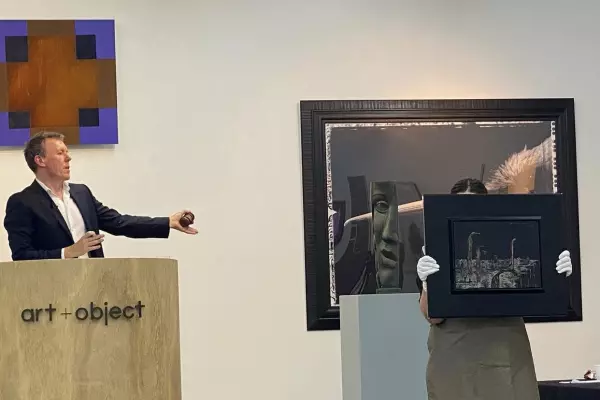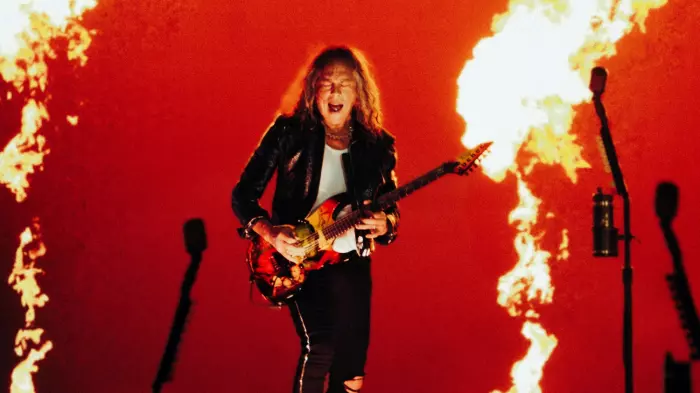The highly anticipated auction of the art collection of the late philanthropists Adrian Burr and Peter Tatham finally took place at Art + Object in Auckland after being postponed four times because of covid lockdowns. The auction house had waited until pandemic restrictions were eased to deliver the in-room sales experience, albeit with compulsory mask wearing and social distancing in place.
The attendance in the room on day one of the two-day sale was very low, with most clients bidding via an online app and other methods such as telephone or absentee bidding. Art + Object later disclosed that more than 1000 people had participated online, which is a record number for an art sale in New Zealand and shows how quickly the market is changing to embrace the new technology on offer.
Art for art’s sake
Burr was a property developer who was part of the consortium of businessmen who developed the Viaduct Harbour and many other sites, mainly in Auckland. He had stepped back from his business engagements in 2006 to concentrate on philanthropic and arts-based activities. He and Tatham, his partner and an interior designer, had both money and taste and were generous towards, and showed genuine interest in, artists and the arts. Their philanthropy was wide ranging, from supporting creatives by directly commissioning artworks, to financially assisting the theatre sector, the Auckland Writers Festival, and numerous charities.
The couple were well known for their extensive art collection, which included many large-scale site-specific sculptures and museum-quality examples of paintings by Colin McCahon, Shane Cotton and Russell Clark, among others. This they had built up over many decades with the assistance of gallerist John Gow.
Day one of the auction featured art and sculpture and day two focused on furniture, interior items and personal belongings such as a 1990 Bentley Continental Corniche and a Steinway & Sons grand piano. Conservative pre-sale estimates indicated that the event would set a record for the highest-grossing single-vendor auction in New Zealand, easily eclipsing other well-known collections sold within the previous decade, such as those of Les and Milly Paris and Tim and Sherrah Francis, which were also auctioned at Art + Object.
From Michael Parekōwhai to Phil Price
The Burr and Tatham sale was an enormous success, and with highlights too numerous to mention, it’s hard to select just a couple of notable works to feature. Paramount among them, though, was arguably Michael Parekōwhai’s bronze sculpture A Peak in Darien. This work was created in 2011 to be part of the New Zealand exhibit at the Venice Biennale and was bought by Burr and Tatham when it returned to New Zealand. It then sat in the garden of their house in Hawke’s Bay before they moved it north to the garden in their Herne Bay residence. The pre-sale estimate was for $900,000 to $1.4 million and the duel that took place between an internet bidder and another on the phone was nothing short of astonishing. In the end, the hammer came down at $1.7m, which rose to $1,997,500 once the buyer’s premium was added, making it the top price at auction in New Zealand for any artist – an incredible feat for a piece of contemporary sculpture.
Other large-scale sculptures also far exceeded pre-sale expectations, including Phil Price’s wind-activated kinetic work Peter’s Blue Pōhutukawa, which Burr commissioned in memory of Tatham in 2019. Price’s works are predominately publicly commissioned, site-specific sculptures and only one small piece had been offered at auction previously. Peter’s Blue Pōhutukawa is not normally the type of work that would be sold at auction because it had to be viewed in situ at the couple’s house, and a lot of logistical work would be required post-sale to shift it to its new location. This didn’t hamper the enthusiasm of the potential buyers, however: from the initial pre-sale low estimate of $150,000, they pushed the price up to $270,000 before the hammer fell.
Rare work
The Burr and Tatham sale included four paintings by Colin McCahon, a favourite artist of the couple. Three were of exceptional quality, with one, St Matthew: Lightning, tipped to set the record for the highest price at auction. In recent years, the highest-priced McCahons offered at auction have failed to sell under the hammer, with the exception of The Canoe Tainui, which fetched a record $1.35m in 2016. Although there wasn’t the fevered bidding on St Matthew: Lightning as there had been on other works in the sale, it still managed to fetch $1,625,000, just above the low estimate, setting a record for a McCahon sold at auction.
More surprising was the interest in Entombment (after Titian), a rare and highly academic work from McCahon’s early career and the first of the religious paintings that shaped a significant part of his entire practice. These works come to market infrequently (only one other in at least 20 years) and such was the enthusiasm that bidding opened almost right on the pre-sale low estimate of $400,000 and drove the price, in $10,000 rises, to $910,000.
Another notable New Zealand artist whose work attracted great interest was Bill Hammond, who died in January. His creations have long been undervalued at auction, mainly because really good examples have all been sold off market in private transactions. But this changed at the Burr and Tatham sale, with two setting new benchmark prices. Living Large No.7, which had hung in the boardroom at Viaduct Holdings and dates from 1995 (before Hammond produced his better-known bird paintings), went to a phone bidder for $440,000. A more familiar work, Whistler’s Mother, featuring a single bird in front of a richly coloured turquoise background, was the subject of an old-fashioned auction-room duel between two room bidders and finally realised $315,000, $200,000 over the low estimate.
The auction across two days of art, furniture and decorative items realised $15,077,156, including the buyers’ premiums, well in excess of any other mixed-vendor or single-vendor sale held in New Zealand. This represents almost half the annual turnover of the auction market in this country.
The sale set more than 20 individual artist records – including for some of New Zealand’s more significant contemporary practitioners such as Shane Cotton, Paul Dibble and Chris Charteris – and benchmarked prices for creatives such as early modernists Raymond McIntyre and Russell Clark who have potentially been undervalued in the secondary market.
Briar Williams is a fine arts valuer at Arts Valuations NZ


